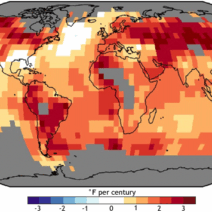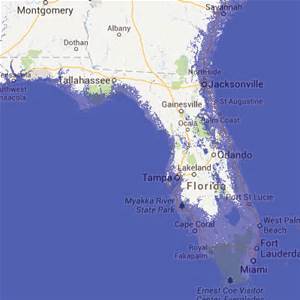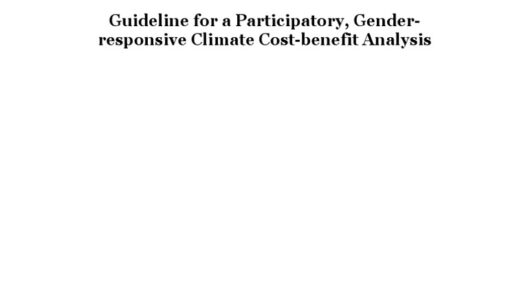As the planet continues to warm due to anthropogenic activities, one of the most alarming and irrevocable consequences is the rise in sea levels. This phenomenon, often referred to as “the rising tide,” poses significant risks to coastal communities, ecosystems, and the world at large. But how high will our oceans rise, and what can we expect in the coming decades and centuries? A closer examination reveals various dimensions of this complex issue.
Firstly, understanding the mechanisms behind sea level rise is crucial. The primary drivers include thermal expansion of seawater and the melting of land-based ice. As global temperatures increase, water absorbs heat and expands, leading to higher sea levels. Additionally, glaciers and polar ice sheets—particularly those in Greenland and Antarctica—are melting at an unprecedented rate. The Intergovernmental Panel on Climate Change (IPCC) has projected a staggering increase in sea levels, which could reach between 1 and 2 meters by the year 2100 under high-emission scenarios.
There are two primary types of sea level rise: eustatic and isostatic. Eustatic sea level rise refers to the global changes in sea levels due to the factors mentioned earlier, affecting coastlines universally. Isostatic sea level rise, on the other hand, involves regional differences caused by the Earth’s crust responding to the melting of ice sheets and glaciers. For example, areas previously covered by ice, like Scandinavia and Canada, may experience local rises as the land rebounds, while other regions may sink due to the loss of weight from the ice.
When considering the implications of rising sea levels, one must recognize the significant risk of coastal inundation. Low-lying areas such as Miami, New Orleans, and parts of Southeast Asia could face chronic flooding, displacing millions of inhabitants. As sea levels rise, storm surges become more destructive and widespread, resulting in greater vulnerability during extreme weather events. For instance, Hurricane Sandy in 2012 provided a stark demonstration of the dangers faced by coastal cities when even a modest rise in sea levels exacerbated flooding and damage.
The ecological consequences of rising oceans cannot be overlooked. Marine ecosystems, particularly coral reefs and mangroves, are integral to coastal protection and biodiversity. Coral reefs are already under siege from warming waters, and with the concurrent rise in sea levels, their survival is threatened. Mangroves, which serve as a buffer against storms and erosion, are also at risk, as increased salinity levels infiltrate habitats. The loss of these ecosystems not only endangers marine species but also compromises the livelihoods of communities reliant on fishing and tourism.
Adaptation strategies are being formulated to confront the imminent threats of sea level rise. Coastal cities are investing in resilient infrastructure, building seawalls, restoring natural barriers like wetlands, and implementing zoning regulations that discourage construction in vulnerable areas. These proactive measures aim to protect both human and ecological interests. Additionally, managed retreat—relocating communities out of harm’s way—has emerged as a robust strategy in extreme cases, albeit a politically and emotionally contentious one.
The social implications of rising sea levels are profound. Displacement from homes and livelihoods creates economic strain and exacerbates social inequalities. Vulnerable populations, often those least responsible for climate change, bear the brunt of its consequences. Climate refugees may proliferate, leading to increased migration pressures and potential geopolitical tensions over resources, border control, and land use. The interconnectedness of global economies means that the effects of sea level rise will have ramifications far beyond the communities directly affected.
On an international scale, the response to rising sea levels requires collaboration and commitment. The Paris Agreement aims to limit global warming to well below 2 degrees Celsius, which could mitigate some of the dire consequences of climate change. However, commitments to reduce greenhouse gas emissions must translate into tangible actions. Funding for adaptation and resilience projects, particularly in developing nations, is critical. Technological innovations in renewable energy, carbon capture, and sustainable urban planning can also play paramount roles in combating climate impacts.
Public awareness and education are crucial as well. Grassroots movements and advocacy play pivotal roles in pushing for climate action. As individuals embrace sustainable lives, they foster collective responsibility. Programs targeting both local and global communities enhance knowledge about the causes and effects of climate change, encouraging engagement and proactive behavior. Sharing stories of those directly affected by rising sea levels fosters empathy and a unified spirit for action.
In conclusion, the rising tide of sea levels due to global warming presents a multifaceted challenge. The projections of dramatic increases in ocean heights by the end of the century, coupled with the associated ecological, social, and economic consequences, underline the urgency of immediate action. A concerted effort involving adaptation strategies, international cooperation, and public engagement can forge a path toward resilience. While the threat posed by rising seas is formidable, it is not insurmountable. By addressing the roots of climate change and actively working toward sustainable solutions, we may find a way to coexist with both our changing planet and the seas that surround it.








